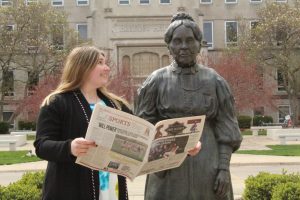Originally published October 1, 2010
A 19-year-old University of Texas student opened fire inside one of that university’s library’s on Tuesday morning.
Colton Tooley, a math major, fired several AK-47 rounds into the undergraduate library before turning the gun on himself.
His act has left the campus, community and the man’s family dumbfounded. As of Wednesday night, police still were unsure about his motive. Campus officials said he raised no red flags.
The shooting has left the university, which has seen violence in the past, reeling. And in the wake of shootings at Virginia Tech in 2007 and Northern Illinois in 2008, a campus shooting has once again hit too close to home.
Officials at Texas have said messages sent to students left too many confused.
The university sent out various messages, but ones containing terms like “shelter in place” left many confused what the word “lockdown” actually meant.
That confusion also, perhaps more than the shooting, hit close home.
There has been confusion and uncertainty about every single ForeWarn message that’s gone out. It’s as simple – and as frightening – as that.
Thankfully, Bradley’s never seen a gunman on campus. But looking at the Texas incident, it’s clear that it really can happen any where.
And judging by what we’ve seen with Bradley’s system, we’re not really reassured that should something so serious happen here, students and faculty would know what to do.
Some of this can be blamed on the system and its implementation.
Certain cell carriers have problems with certain messages, which means not every person gets them.
Many do not really understand what some messages say.
That’s why Tuesday’s shooting is particularly frightening to us.
It’s easy to write here that something needs to be done, especially when we have no concrete solutions.
But something further needs to be done.
Thankfully, the ForeWarn system hasn’t been used this year, so it’s possible that next time it there won’t be any problems.
But in the mean time, perhaps more tests should be run. Or perhaps further training is needed.
Whatever the process, we hope the system remains at the forefront of administrators’ minds.
That’s the university’s responsibility.
Plans for what to do in various situations are already in place, and there’s really nothing wrong with those plans.
But it doesn’t seem like many people know those plans.
Even during drills or times when building alarms are accidentally set off, confusion runs rampant.
Some, though not all, professors know what to do. And students are rarely of any help.
Perhaps more information needs to be made available. Or maybe directions need to be posted in every class.
We don’t know for sure.
Tuesday’s incident should serve as a reminder of what could happen.



